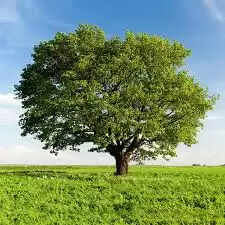Interesting Facts About What Is The Value Of A Tree

Determining the worth of a tree is subjective and varies depending on whom you ask. To a timber merchant, a tree's value lies in its market price as usable wood for various products. For an orchard owner, it's the projected value of the fruits it will yield over its lifetime. Yet, for creatures like the coppersmith barbet, such as the banyan tree, its value transcends monetary measures.

Can we assign a monetary value to a tree? Indeed, utilizing the concept of "Economic Value," we can. Economic value gauges a person's valuation of a good or service based on the benefits derived from it, offering a more comprehensive assessment than mere market value.
What services does a tree provide throughout its life? Trees offer a plethora of services often taken for granted, including:
(a) Absorbing carbon dioxide and emitting oxygen. (b) Filtering particulate matter and absorbing pollutants from the atmosphere. (c) Mitigating extreme weather conditions like sunlight, heavy rain, and strong winds. (d) Preventing soil erosion through root systems. (e) Retaining rainwater, reducing runoff, and replenishing groundwater. (f) Sustaining biodiversity by providing food and habitat for various species. (g) Contributing to spiritual well-being and happiness.
Assigning market values to these services involves estimating costs if obtained from alternative sources.
Addressing global carbon emissions and combating climate change is paramount. Trees act as natural carbon sinks, sequestering carbon from the atmosphere. George Monbiot aptly described trees as "magic machines" for this purpose. Calculating the value of carbon sequestration can be directly linked to a tree's size, with felling trees releasing stored carbon back into the atmosphere, nullifying this benefit.
The importance of trees in oxygen production and air purification cannot be overstated, particularly in regions like India with pervasive air pollution. The cost of air filtration systems during periods of poor air quality serves as a proxy for the cleansing role of trees.
Trees also play a crucial role in climate regulation by reducing heat absorption and wind impact, potentially lessening the need for air conditioning and other cooling devices.
Root systems help stabilize soil, reducing erosion and flooding risks, while canopies intercept rain, improving soil quality and groundwater recharge. Despite the challenge of quantifying intangible benefits like happiness and biodiversity preservation, their significance cannot be dismissed.
Professor T M Das calculated a tree's value in 1979, factoring in its environmental contributions over a 50-year lifespan. His estimates, revised in 2011-12, underscored the substantial worth of trees.
Infrastructure projects often disregard tree preservation, viewing trees as obstacles to development rather than valuable assets. Recognizing trees' true worth could influence project design and decision-making.
In recent years, millions of trees have been cleared for various projects, highlighting a disregard for their intrinsic value. Remembering age-old wisdom, such as Kempegowda's mother's advice to "build lakes, plant trees," underscores the enduring value of trees, even amidst modernization pressures.
In conclusion, trees are invaluable assets, far exceeding their timber or fruit value. As stewards of the environment, acknowledging and preserving their worth is essential to sustainable development and collective well-being.

